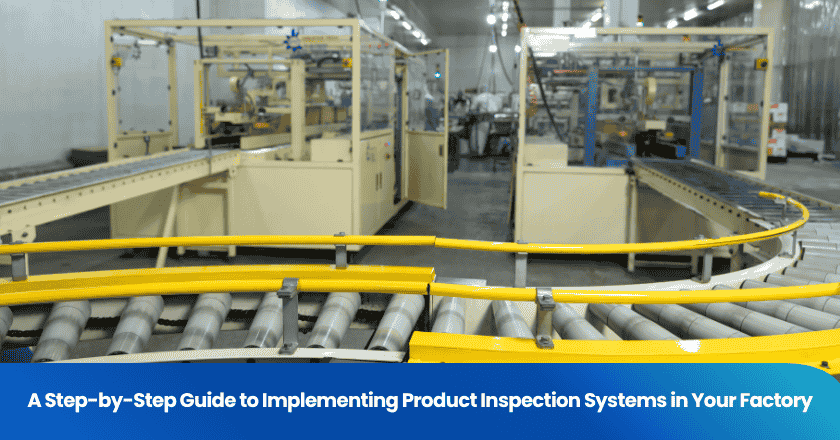
You can learn how to improve quality in manufacturing by setting clear quality goals, assessing production processes regularly, and empowering your team through targeted training. Use robust methodologies such as Six Sigma and Lean to minimize defects and boost first-pass yield. Track metrics like scrap rates and customer complaint rates to measure progress. Enhanced product quality reduces returns and warranty claims, builds customer loyalty, and gives you a competitive edge.
Key Takeaways
- Set clear quality goals to guide your manufacturing processes. Regularly assess progress to identify areas for improvement.
- Invest in employee training to enhance skills and reduce defects. A well-trained team can spot issues early and maintain high quality.
- Simplify processes using Lean and Six Sigma methods. These strategies help eliminate waste and improve efficiency, leading to better product quality.
- Embrace a continuous improvement mindset. Regularly evaluate processes and encourage employee feedback to sustain high quality over time.
- Utilize automation in quality control. Automated systems increase inspection speed and accuracy, helping to catch defects before they reach customers.
Quality in Manufacturing
What Is Quality?
You define quality in manufacturing by meeting or exceeding established standards and specifications. Quality assurance involves processes that help you maintain consistent levels in your products. These processes focus on managing product quality, not just verifying it after production. You can use benchmarking to compare your performance against industry standards. This approach identifies areas for improvement and helps you enhance operational efficiency. Quality by Design encourages you to integrate quality into the earliest stages of product development. Every stage of your production process should meet quality requirements. Key factors that determine quality include:
- Defining clear standards and specifications
- Verifying raw material quality
- Validating batches through sampling
- Conducting in-process checks
- Reporting nonconformance and taking corrective actions
- Keeping accurate documentation
- Inspecting final products
- Pursuing continuous improvement
These steps ensure your products remain free from unexpected defects and comply with regulatory standards.
Why It Matters
Quality plays a vital role in your manufacturing operations. When you improve quality, you enhance operational efficiency and reduce costs. According to industry research, leading quality practices can help you recover a significant portion of sales lost to poor quality. For example, companies in the medical device sector could potentially recover billions of dollars each year by focusing on quality. High-quality manufacturing also boosts product reliability and customer satisfaction. Bain & Company found that a 5% increase in customer retention can raise profits by up to 95%. This statistic highlights how quality directly impacts your bottom line. By prioritizing quality, you build trust with customers and create a foundation for long-term success.
How to Improve Quality in Manufacturing
Employee Training
You can improve product quality by investing in structured employee training programs. These programs help new hires ramp up quickly and confidently. Real-time skill tracking lets supervisors monitor progress and maintain consistency. Mentorship from certified trainers reinforces skills and enhances the learning experience. Standardized training across shifts and sites ensures everyone receives the same quality of instruction. Accelerated training processes boost retention and reduce downtime, all while maintaining high product quality.
A well-trained workforce is essential for minimizing defects. Continuous training helps your team understand processes and quality standards, enabling early detection of potential issues. When you engage employees in continuous improvement initiatives, you cultivate a quality-focused culture and encourage ownership of tasks. Six Sigma training equips your staff with the skills to identify and prevent human errors. This data-driven approach ensures workers apply their knowledge to reduce errors in real time.
Tip: Regularly update training materials to reflect new process improvement strategies and evolving quality standards.
Process Simplification
You can simplify processes to increase product quality and operational efficiency. Use proven techniques such as Lean, Six Sigma, Kaizen, and Total Quality Management. These strategies eliminate waste, reduce errors, and standardize workflows. The following table highlights key process simplification techniques and their benefits:
| Technique | Description | Benefits |
|---|---|---|
| Lean | Focuses on eliminating waste to maximize value. | Cost reduction and improved process speed. |
| Six Sigma | Uses statistical tools to reduce quality variations. | Improved product quality and customer satisfaction. |
| Kaizen | Involves all employees in continuous improvement efforts. | Progressive improvement and increased commitment. |
| Total Quality Management | Engages all employees in standardizing processes and listening to customers. | Reduced errors and improved overall performance. |
You can follow these steps to simplify processes and improve product quality:
1. Define value based on customer needs.
2. Map the value stream to identify waste.
3. Create flow for smooth material and information movement.
4. Establish pull to produce goods only as needed.
5. Pursue perfection by continuously seeking ways to eliminate waste and enhance value.
Statistical evidence shows that process simplification leads to significant improvements. For example, the automotive industry reduced defect rates by 37% within six months. Electronics manufacturers saw a 22% increase in throughput after adopting statistical process control. Packaging companies saved $1.2 million annually, and medical device manufacturers reduced customer complaints by 45%. Semiconductor plants improved yield by 18% within three months. General Electric reduced scrap rates by 62% and improved first-pass yield by 34%. Honeywell eliminated over $2 million in annual rework costs, and Virginia Mason Medical Center achieved a 75% reduction in medication administration errors.
Continuous Improvement
You can achieve higher quality goods by embracing a continuous improvement mindset. This approach involves regularly assessing processes, identifying areas for enhancement, and implementing changes. Widely adopted models include Lean, Total Quality Management, PDCA Cycle, Root Cause Analysis, Benchmarking, 5S Methodology, Value Stream Mapping, Six Sigma, and Kaizen. Lean focuses on reducing waste and creating more value with fewer resources. Total Quality Management engages all employees in refining processes and enhancing customer satisfaction. Six Sigma uses statistical methods to reduce variations and defects.
Continuous improvement cycles deliver measurable results. For example, a manufacturer optimized its cutting process and introduced precise machine calibrations, saving thousands of dollars in raw materials each month. A car manufacturer reduced warranty claims for a specific engine component by 30% after switching suppliers and improving quality control, saving millions in repair costs. An appliance manufacturer redesigned its wiring system to prevent recalls and protect its reputation.
You can see long-term improvements in quality metrics by adopting continuous improvement strategies. Plants have improved defect rates from 5% to 1% by addressing machine calibration issues. Manufacturers have reduced external failure costs by 30% through better internal processes and training. Quality managers have increased process capability indices, significantly reducing defects.
Note: Foster a continuous improvement mindset by encouraging employees to suggest process improvement strategies and participate in regular quality reviews.
Lean Principles
Lean manufacturing provides a powerful framework for how to improve quality in manufacturing. The five core principles guide you to higher efficiency levels and help you identify inefficiencies. These principles include defining value, mapping the value stream, creating flow, establishing pull, and pursuing perfection. By following these steps, you optimize workflows and drive business efficiency.
Lean manufacturing emphasizes continuous improvement and respect for people. Waste reduction, achieved by eliminating non-essential processes, directly improves product quality. Address the eight wastes of Lean—overproduction, waiting, excess transportation, overprocessing, unnecessary inventory, superfluous motion, defects, and underutilized talent—to optimize your operations.
Case studies show the impact of Lean strategies. Toyota implemented Just-in-Time production and 5S, achieving operational excellence, reduced waste, and high customer satisfaction. Virginia Mason Medical Center reduced patient wait times by 40% and improved satisfaction through Lean initiatives focused on patient-centered care.
Six Sigma Approach
Six Sigma offers a structured approach for how to improve quality in manufacturing. You can follow these steps:
1. Define the problem, establish project scope, and clarify customer requirements.
2. Measure baseline data about the current process, including defect rates and cycle times.
3. Analyze data to identify root causes of problems using statistical analysis.
4. Improve by developing and implementing solutions based on root cause analysis.
5. Control to ensure that improvements are sustained over time.
Six Sigma projects deliver impressive results. The methodology aims for a defect rate of 3.4 defects per million opportunities. Short-term capability reaches 6 Sigma, while long-term capability achieves 4.5 Sigma. This approach helps you sustain improvements and maintain high product quality.
Six Sigma training provides employees with practical, data-driven skills to identify and prevent errors. Workers apply their knowledge to reduce defects in real time, supporting continuous improvement and process improvement strategies.
Alert: Use Six Sigma tools to monitor quality metrics and ensure that process improvements remain effective over time.
Improve Quality Control
Inspection Methods
You strengthen manufacturing quality control by using a range of inspection methods. Visual inspection helps you catch surface defects such as scratches and dents. Automated Optical Inspection (AOI) uses machine vision to scan for dimensional errors. Non-Destructive Testing (NDT), including ultrasonic and radiographic techniques, lets you find internal flaws without damaging products. Functional and load testing reveals performance issues under real-world conditions. Process monitoring with statistical process control detects process drift before defects occur. You also rely on advanced tools:
- Coordinate Measuring Machines (CMM) provide high-precision measurements for object geometries.
- Laser scanning captures surface irregularities with accuracy.
- Optical metrology systems detect surface defects using advanced imaging.
- X-ray and ultrasonic testing identify internal flaws.
Comparing manual and automated inspection, you see that automated systems deliver faster, more consistent results, though they require higher initial investment. Manual inspection costs less upfront but demands more labor and offers variable accuracy.
Statistical Process Control
Statistical process control (SPC) is essential for manufacturing quality control. You monitor processes to spot variations that could cause defects. Control charts help you distinguish between common and special cause variations. By addressing special causes, you prevent defects and maintain consistent product quality. SPC reduces variability, improves yield, and lowers waste. You track key metrics:
| Metric | Description |
|---|---|
| Cost of Quality (CoQ) | Encompasses expenses due to poor quality and investments for ensuring high quality. |
| Yield | Measures process effectiveness, including first-pass yield for products manufactured correctly the first time. |
- SPC enables continuous monitoring, helping you detect trends before they impact production.
- You achieve higher quality products and minimize waste.
Automation in Quality Control
Automation transforms manufacturing quality control. Machine vision systems inspect product characteristics with speed and precision. Sensors and automated measurement devices collect accurate data on specifications. Inspection robots remove non-conforming products. Data analysis systems and AI predict defects before they occur. Integrated quality management systems streamline quality control processes and centralize data.
You see dramatic improvements with automation:
- Medical device manufacturers increased inspection quality by 65%.
- Electronic component makers improved throughput sixfold.
- Automotive plants reduced inspection time by 50%.
- Semiconductor facilities cut inspection time by 60%.
- Turbine blade inspections dropped from 45 minutes to 3 minutes.
Defining Quality Requirements
You define quality requirements by aligning them with industry standards and customer expectations. Quality control processes ensure products meet specified requirements. Quality assurance covers all actions to demonstrate compliance. You set clear quality objectives to guide your organization. Quality policies must address sector-specific demands and regulatory standards. You rely on certifications such as ISO 13485 for medical devices and ISO 9001 for general manufacturing. These standards help you maintain traceability and compliance throughout manufacturing quality control.
Tip: Document quality requirements and communicate them across teams to ensure consistent quality control processes.
Benefits
Reduced Waste
You can reduce waste in manufacturing by focusing on quality improvement. When you use statistical quality control methods, you identify and eliminate defects early in the process. Six Sigma methodology helps you prevent defects, which leads to less scrap and rework. According to the American Society for Quality, effective quality manufacturing aims for no more than 3.4 defects per million opportunities.
- Data-driven measurements help you spot problems before they grow.
- Defect prevention increases customer satisfaction and lowers waste.
- Fewer defects mean less material and time wasted.
Lean manufacturing also supports waste reduction by streamlining operations and removing unnecessary steps. You see direct savings in materials, labor, and energy.
Increased Profits
Quality improvement directly impacts your bottom line. When you reduce waste and defects, you lower production costs and boost profits. You can measure financial gains using key metrics:
| Metric | Formula | Application in CI Projects |
|---|---|---|
| Net Profit | Sales Revenue – Total Costs | Achieved through cost reductions from process efficiency and waste cuts |
| Net Profit Margin | (Net Profit / Revenue) × 100 | Increased by reducing operational expenses while maintaining revenue |
| Gross Profit Margin | ((Revenue – COGS) / Revenue) × 100 | Improved by reducing defects and material waste |
| Operating Profit Margin | (Operating Profit / Revenue) × 100 | Increased by streamlining processes and boosting labor productivity |
| EBITDA | Revenue – Operating Expenses (excl. ITDA) | Increased by improving operational efficiency and reducing non-core costs |
You can see real-world results. A food processor that adopted just-in-time principles achieved a 40% reduction in inventory levels, freeing $2.3 million in working capital and cutting yearly storage costs by $340,000. Quality costs often consume 15-40% of manufacturing expenses, so improvements offer significant savings.
Customer Satisfaction
You build trust and loyalty when you deliver high-quality products. Manufacturers report higher customer satisfaction rates after improving product quality. You see fewer returns and complaints, which leads to increased sales.
Tip: Focus on consistent quality to strengthen relationships with your customers and encourage repeat business.
Compliance
You meet industry standards and regulatory requirements by maintaining strong quality control. Clear documentation and traceability help you demonstrate compliance during audits. Recycling and reusing materials also support sustainability goals and regulatory demands. Lean manufacturing provides a structured approach to minimize waste and optimize operations, making it easier for you to comply with environmental and safety regulations.
Overcoming Challenges
Resistance to Change
You often face resistance when you introduce new quality improvement initiatives in manufacturing. Employees may feel uncertain or worry about how changes affect their roles. You can overcome these barriers by using proven strategies. Transparent communication builds trust and helps everyone understand the reasons for change. Leadership plays a key role—when leaders actively support and model new behaviors, employees follow their example. Comprehensive training gives your team the skills they need and fosters a supportive environment. Involving stakeholders in the process creates a sense of ownership and commitment.
You can also align project management with change management to address both operational and human challenges. Identify resistance points early by assessing readiness and reviewing past initiatives. Recognize and reward employees who embrace change to encourage others.
Cost Management
You must manage costs carefully when you improve quality in manufacturing. Quality initiatives often require investment in training, new equipment, or process upgrades. You can control expenses by setting clear budgets and tracking spending throughout the project. Use data to prioritize improvements that deliver the highest return on investment. Monitor key metrics such as cost of quality, yield, and rework rates. You can reduce costs by streamlining processes and eliminating waste. Regular reviews help you adjust strategies and keep projects on track.
Tip: Focus on small, incremental changes to spread costs over time and minimize disruption.
Sustaining Improvements
You need to sustain improvements to achieve lasting results. Continuous monitoring ensures that new processes remain effective. Standardize successful practices and document procedures so everyone follows the same steps. Encourage employees to share feedback and suggest further enhancements. Regular audits and performance reviews help you catch issues early and maintain high standards. Celebrate achievements to motivate your team and reinforce a culture of quality.
- Set clear goals for ongoing improvement.
- Track progress using measurable metrics.
- Provide ongoing training and support.
- Foster open communication across all levels.
You build a resilient organization by making quality improvement a daily habit.
You drive business success when you make quality assurance a daily priority. Quality assurance supports every improvement, from employee training to process optimization. You see measurable gains by using proven methodologies and tracking results. Quality assurance helps you adapt to change and maintain high standards. Remember, you build a strong reputation when you treat quality assurance as a continuous journey, not a one-time project.
FAQ
What is the first step to improve quality in manufacturing?
You start by setting clear quality goals. Define measurable standards for every process. Communicate these goals to your team. Use regular assessments to track progress. This approach helps you identify areas for improvement quickly.
How often should you review manufacturing processes?
You should review processes at least quarterly. Frequent reviews help you catch issues early. Use data from inspections and audits to guide your decisions. Regular reviews support continuous improvement and maintain high product quality.
Which quality control method works best for reducing defects?
You achieve strong results with statistical process control. This method uses data to monitor production and spot variations. Control charts help you identify problems before defects occur. Combine this with regular inspections for maximum effectiveness.
How does employee training impact product quality?
You improve product quality by investing in employee training. Well-trained staff understand procedures and spot errors early. Training programs boost consistency and reduce mistakes. Continuous learning keeps your team updated on best practices.
What role does automation play in quality control?
You use automation to increase inspection speed and accuracy. Automated systems detect defects faster than manual checks. Sensors and AI analyze data in real time. Automation reduces labor costs and improves consistency across production lines.
Grow your business with TradeAider Service
Click the button below to directly enter the TradeAider Service System. The simple steps from booking and payment to receiving reports are easy to operate.




